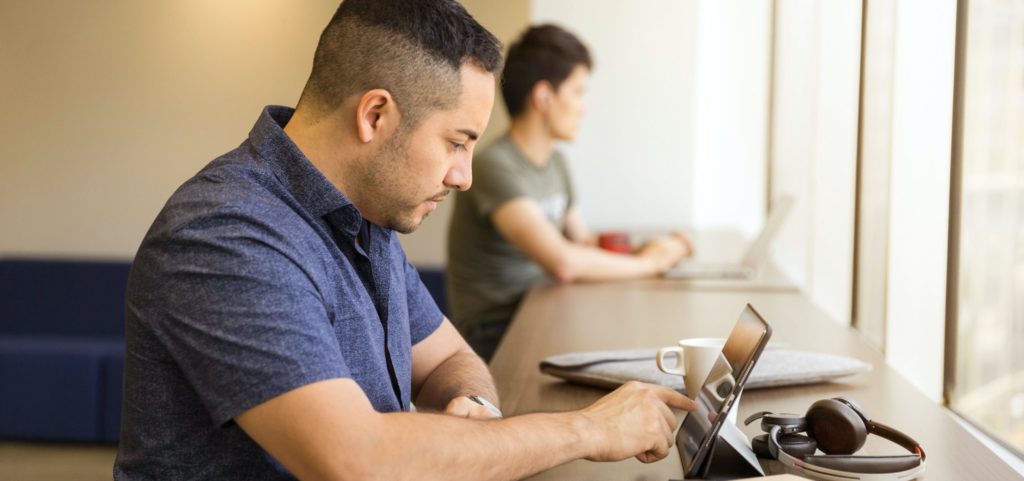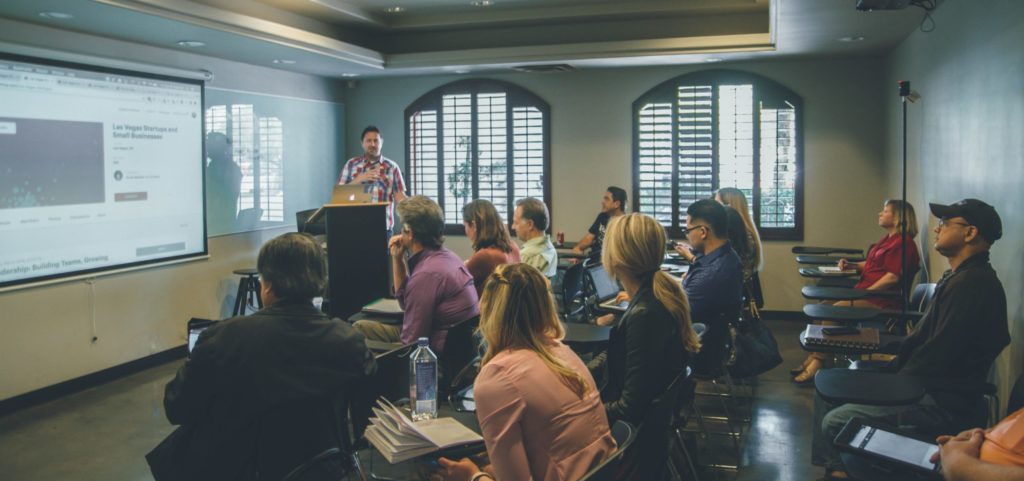What Is Experiential Learning?
Experiential learning is an innovative educational pedagogy that embraces action, experimentation, and personal reflection. It sees the learning process and its outcomes not as two separate issues, but as interwoven parts of a whole.
Educational theorist David Kolb published his first Experiential Learning Model (ELM) in 1984. It revolves around four key elements:
- Concrete or practical experience,
- Reflection and observation,
- Creation of abstract concepts based on these observations and reflections,
- Testing these new concepts.
Today’s higher education administrators are making experiential approaches like work-integrated learning more prominent in university curricula. Why? Because by doing so, students will gain vital skills for their future careers and everyday life.
Is experiential learning suitable for higher education?
Experiential learning in higher education settings is tremendously effective. Rather than sitting through lectures and exams, students gain applied, direct experience with industries and environments related to their faculty.
Through this hands-on approach, students become more engaged with the subject matter, learn more effectively, and build life and career skills to prepare them for the world after graduation. Higher education institutions and educators also benefit from increased retention rates, better engagement, and improved career outcomes.
What does experiential learning activities look like for university students?
Experiential learning in higher education can be either hands-on or virtual, making it accessible even for institutions unable to arrange in-person visits or physical learning sessions.
For example, IT students can benefit greatly from building a computer, placing, and connecting each part one by one. But many universities can’t afford hundreds of systems for students to work on. Instead, institutions can invest in virtual software that simulates computer building, offering students a similar experience at a lower cost.
Project-based learning is another way universities can offer experiential teaching. Some examples include:
- Fieldwork,
- Service learning,
- Studying abroad,
- Volunteering at a local not-for-profit organisation,
- Participating in a business accelerator program,
- Interning for a local small business,
- Growing a student garden.
Which students benefit most from experiential based learning? Is it suitable for all faculties?
Experiential learning in higher education aims to help students engage more deeply with the content while discovering new skills, interests, and abilities. This type of learning is especially beneficial for students who struggle with traditional education.
We can explain this concept better with David Kolb’s learning style model, which are:
- Diverging, i.e., feeling and watching,
- Assimilating, i.e., watching and thinking,
- Converging, i.e., doing and thinking,
- Accommodating, i.e., doing and feeling.
Students who fall into the ‘Diverging’ and ‘Assimilating’ categories benefit more from traditional learning approaches, which involve observation. They may learn best through idea generation (i.e., brainstorming), group work, verbal or written explanation, and personal feedback. Students in these categories can still benefit from challenging and expanding their learning styles through experiential learning.
Students with the ‘Converging’ and ‘Accommodating’ learning styles will benefit most from experiential learning. These students enjoy finding practical solutions and prefer hands-on experiences.
These learning styles exist across all fields of study—there is no limit to experiential learning’s many benefits.
Benefits to Students
Now, let’s discuss some key benefits experiential learning in higher education offers students.
Practical use of subject matter
Students gather plenty of information through lectures, watching videos, attending workshops, and taking quizzes. However, experiential learning in higher education has a clear advantage over these approaches—it drives a deeper understanding of concepts, demonstrating how they apply to real life situations.
For example, a student studying engineering could learn some skills through traditional testing—but imagine how much more engaged they’d be if they could work with a physical model, such as a gearbox, and manipulate its parts with their hands. By observing, thinking, and planning their interactions with the gearbox, students will learn a great deal more than they could by taking notes.
Deal with complex new situations
Experiential learning in higher education is not just about choosing experiences that interest students—it’s about actively engaging with difficult or complex situations to learn from them. By taking on tasks students may find intimidating or scary, they can develop coping strategies to prepare them for the working world’s many challenges.
Learn new skills
Through experiential education, students can build skills relevant to their future careers and daily lives. Not only will they learn more about their industry, but they’ll also develop essential soft skills such as:
- Teamwork and communication,
- Interpersonal skills,
- Self-confidence,
- Initiative,
- Conflict resolution,
- Leadership qualities,
- Time management,
- Learning agility,
- And much more.
Engaging and robust learning design
With Practera, students can experience the best practice templates, custom authoring & library tools. They have the freedom to design and curate their own exclusive program portfolio, whether this be for internships, team projects, accelerator, mentoring, or skills credentialing. Through powerful AI technology powered by real-time analytics, the platform ensures their experiential learning is efficient with seamless delivery and feedback loops as well as personalised.
Benefits to employers
As part of experiential learning programs, many students take on internships, service learning experience, or work placements with local businesses. By participating in these programs, employers enjoy many benefits.
One example is the pair of fresh eyes a student can bring to a business. Many industry stalwarts become so absorbed in their workplace’s everyday practices; they may miss potential changes or additions that could take their business to the next level. These diverse perspectives are exactly what a student can bring!
Benefits to higher education institutions
Institutions also benefit enormously from implementing experiential learning in higher education settings.
One of the greatest benefits for higher education institutions is the rise in student engagement and retention rates. Learning outcomes shoot through the roof when educators can gather an entire class’s attention—and hold it indefinitely. This rise will see immense improvements to an institution’s employment outcomes.
How can higher education institutions offer their students work-integrated learning?
Offering work-integrated learning to students is easy, especially with Practera’s dedicated experiential learning platform. Using this innovative software, institutions can design, deliver, and monitor all kinds of projects, including:
- Internships where students plan, reflect, and seek feedback on tasks
- Work placements with practical and experiential learning
- Industry projects and assessments for students to reflect and improve their skills
- Work simulations that engage students in simulated scenarios to build skills
- Mentoring innovation accelerators to develop and validate ideas
- Credentialing programs where educators review and apply credential competency evidence against a skills framework
The benefits of using Practera for your WIL programs
Monitoring progress and outcomes
Practera’s platform makes offering experiential learning in higher education a breeze
You can see:
- Participant engagement stats,
- Project progress,
- Student reflections and feedback,
- Student questions and educator responses.
This information can help educators gather a 360-degree view of each students’ progress from one touchpoint, so they can offer tailored and timely support.
Quality feedback to enhance learning outcomes
Using Practera’s innovative platform, students, educators, and employers can connect and communicate in one place. Students can receive highly personalised feedback from educators, peers, and industry leaders, helping them deeply understand their progress.
Even better, you can offer feedback across every project stage, unlike traditional learning, where students simply receive a final grade. In this way, the feedback students receive is incredibly valuable and will genuinely enhance their educational outcomes.
Easily assess educational outcomes
It’s simpler than ever to assess educational outcomes with Practera’s experiential learning platform—educators can see beyond the traditional confines of letter grades and percentages and pinpoint where students excel or fall behind.
For example, you can set up assessments and analyse student performance down to a tee through the assessment management module. This way, you can discover how your students have responded and understood where they might need extra support.
Advanced technology enhances user experience
Practera’s advantaged technology makes the user experience better for students, educators, industry representatives, and institutions alike. The platform’s innovative gamification feature, for example, keeps students engaged by making learning more exciting and achievement oriented.
You can also use Practera’s chat-based collaboration system to stay connected across the board—you won’t need to worry about important information getting lost in a sea of emails ever again.
Discover the difference today
Ready to get started with Practera? Discover how experiential learning in higher education could benefit your institution, students, and educators by downloading our white paper today—or connect with us online to chat about how we can help your students excel, particularly with our managed services that can help connect students with industry leaders.




